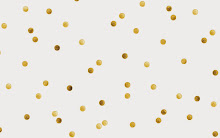I have often looked at that photo when I have felt ungrounded and alone, because this is the life work of bereaved parents — learning to inhabit, from time to time, a kind of necessary solitude, one that permits us to cull grace from agony. It is in this exercise that we can beat back despair and permit absence to underscore a beautiful presence as we gather ourselves and move forward. I remember. David remembers. He existed; he was here; he is here still.I sometimes feel this way about L. We have so few tangible things that represent her and so few people talk about her that sometimes I worry she will just be forgotten or that she didn't really exist to anyone but me and R. The entire article is included below.
A Photo of a Stillborn Baby, Proof of Life, and Grief and Memory
When I heard my brother, a writer, read an excerpt from his book about a character’s memory of the stillbirth of his baby sister, I almost fell to my knees. The scene was a gift; the private, unspoken and unseen blossoming into the public and documented. There was a him. My son Dylan, stillborn after days of labor, existed, and was remembered.
My brother, David Shafer, author of “Whiskey Tango Foxtrot,” wrote the scene based on a photograph taken by a forward-thinking member of the hospital staff after my labor with Dylan. I was well into my third trimester when a blood-clotting disorder caused placental abruption, and I knew he would not be born alive before I went into labor.
As I write this, I recall being in labor. I am struck by my fractured memories, of how much of my labor and delivery was spent fighting to be truly present in that room, of how aware I was that his stillbirth would result in the kind of metaphysical scar that forever changes us, and how dual was my struggle: to keep him and to birth him at the same time.
How do we hold on to what we have loved and lost? To help, the hospital gave me a memory box. There were so few items to share with others; to my mother I gave a tiny heart to be hung on a chain, but we kept everything else, including a photograph.
Immediately after my loss, just discharged from the hospital, I sat disheveled on my bed holding this photo out to my brother David, who had flown across the country instantly when I needed him in the full snowy depths of winter.
Why did hearing him read the scene affect me so deeply? For a decade since the stillbirth, I’d imagined a shared community around losses like mine, though such hope had been whittled away. When I heard the scene, the hope suddenly regained vivid and sharp focus. In permanently recording the loss of my son, David helped me with the sieve-like quality of memory and its impermanence, which operate within a wider social taboo telling us not to dwell on our loss, or infect others with our sorrow.
After “Whiskey Tango Foxtrot” was published, David wrote to me about the photograph that inspired the scene: “It was a Polaroid picture. Those always make the subject seem ephemeral, like a fleeting memory. So when I saw this Polaroid of a stillborn baby held by his still-living mother — my nephew; my sister — I was seeing as much a ghost, as much a spirit, as I will ever see. The image stayed with me for years; and one day I wrote it down. That is a picture of him, there was a him.”
Proof of existence is essential to integrating loss, and this is the power of documentation. About that photograph: I have been cautious about sharing such a particular treasure. Writing here is the first time I have ever revealed publicly that it exists. Cheryl Haggard is co-founder of Now I Lay Me Down to Sleep, a nonprofit that provides remembrance photography for families facing infant death. She says that pictures may provide parents with a sense of peace and healing because they give the bereaved a way to share their child with family and friends. She explains that from these photographs people are able to learn that these babies are important in the life of a family even though they are not physically present.
Much is captured in my Polaroid shot. As I held my dead son, I tried to trace what the memory of his physical self would be for me. I knew that he was dead, but still in his body I saw all potential that had been and gone, and even that seemed beautiful to me; I felt his radiance pulsing from him like waves of heat from stone.
I have often looked at that photo when I have felt ungrounded and alone, because this is the life work of bereaved parents — learning to inhabit, from time to time, a kind of necessary solitude, one that permits us to cull grace from agony. It is in this exercise that we can beat back despair and permit absence to underscore a beautiful presence as we gather ourselves and move forward. I remember. David remembers. He existed; he was here; he is here still.







Wow. Thank you for sharing.
ReplyDeleteI thought it was such a good piece...
DeleteThanks for sharing. I went ahead and printed a picture of A, and have it on my nightstand. Contrary to other's beliefs, this makes me feel better. Just seeing him there helps me remember it's not all in my head.
ReplyDeleteI love that idea. I can't quite settle on what I want to do, but with L's anniversary coming up on the 30th, I want to settle on *something.* Thanks for sharing what you do.
Delete